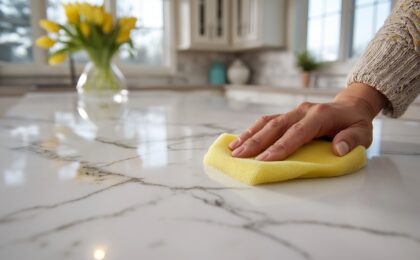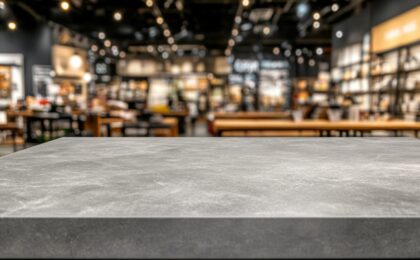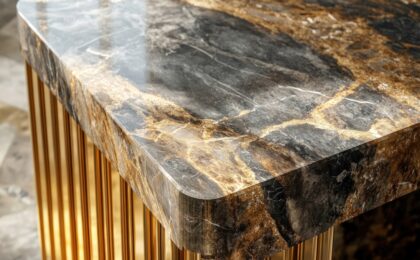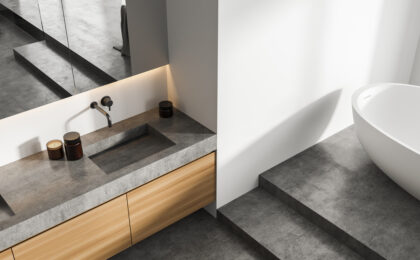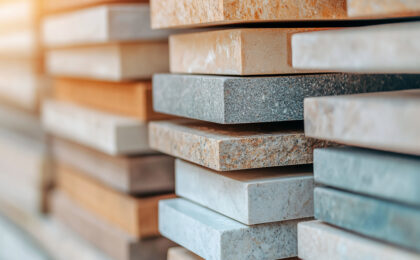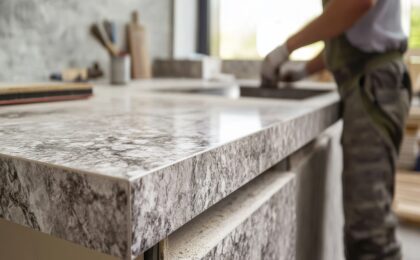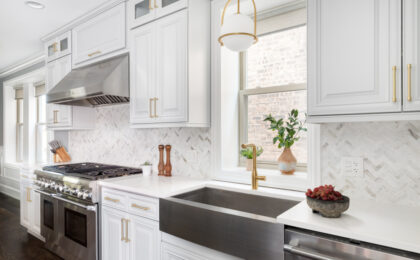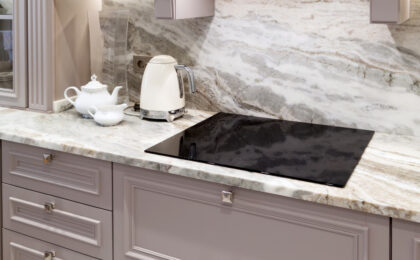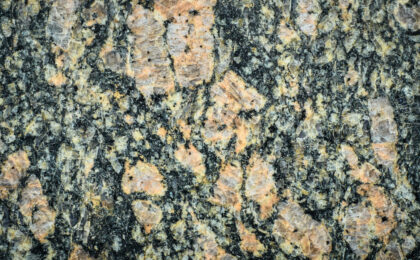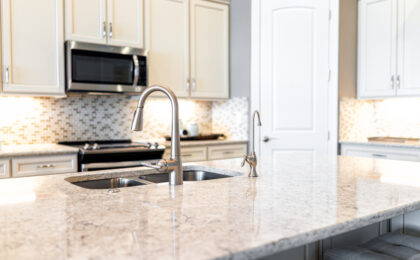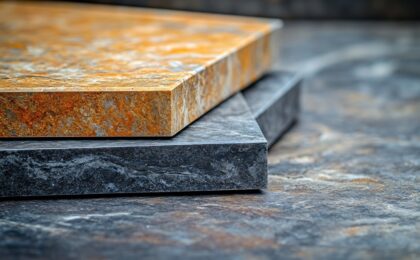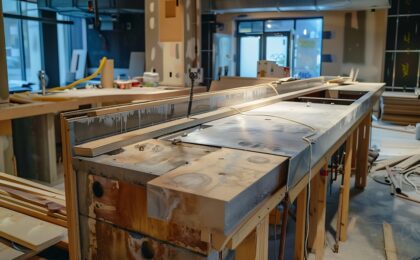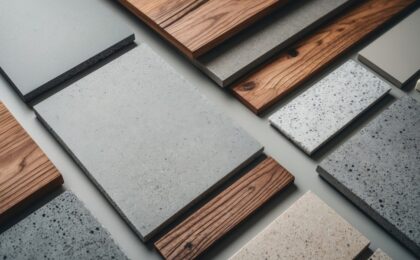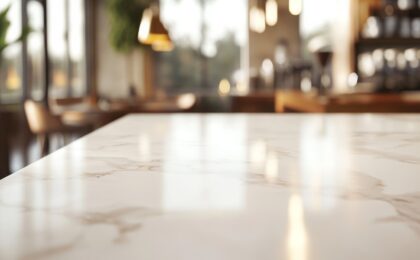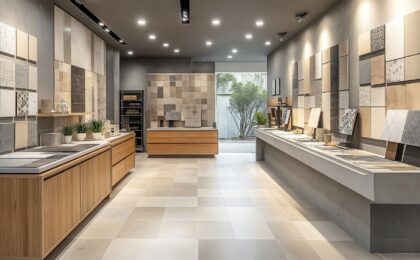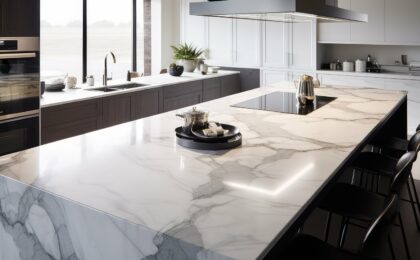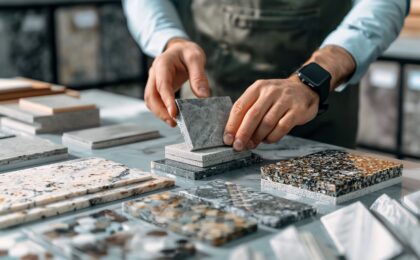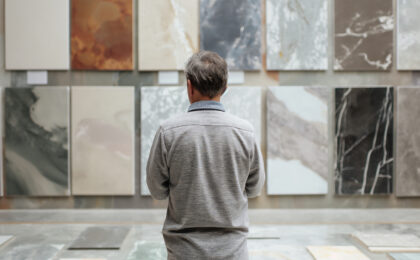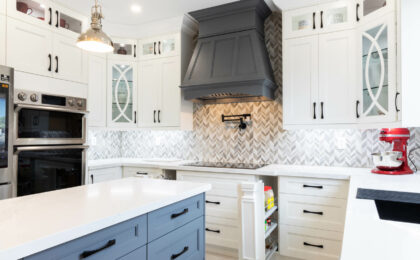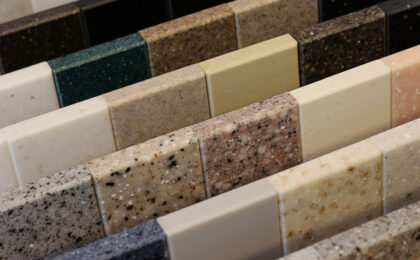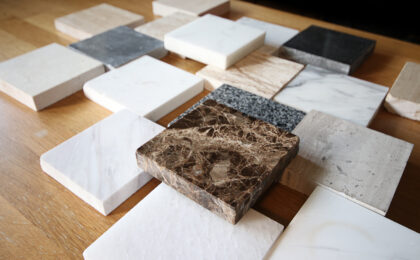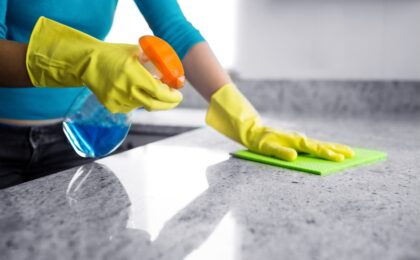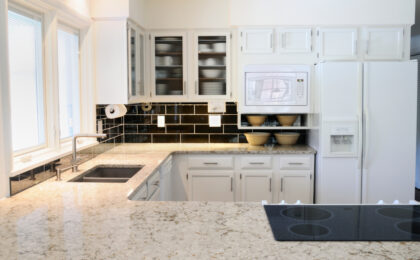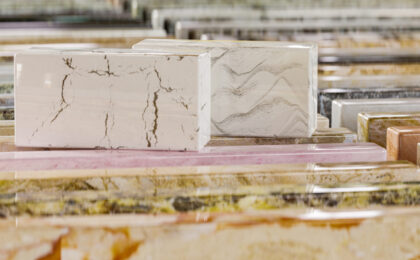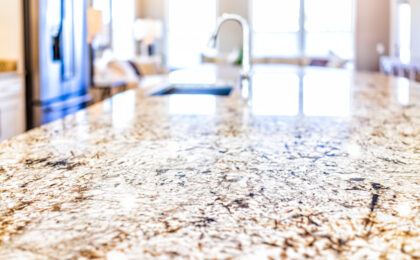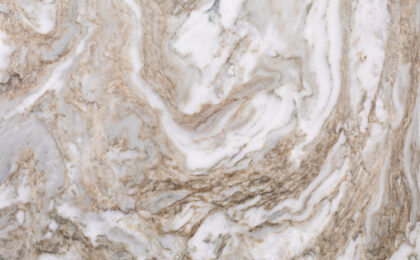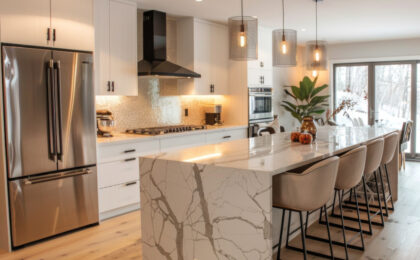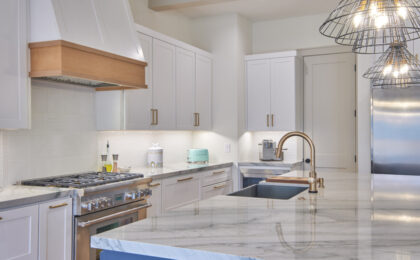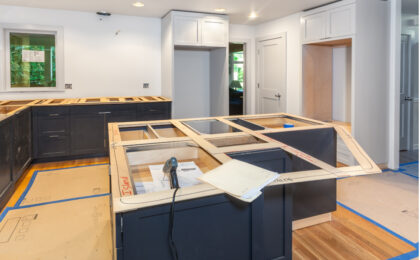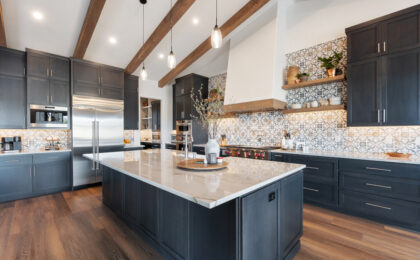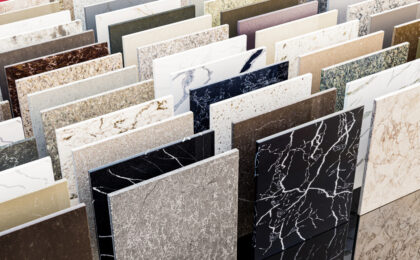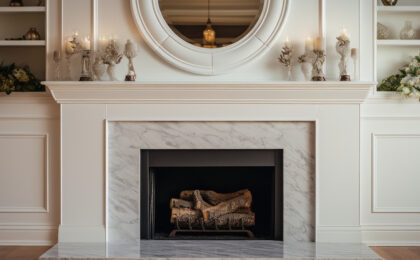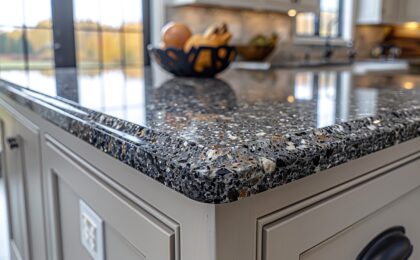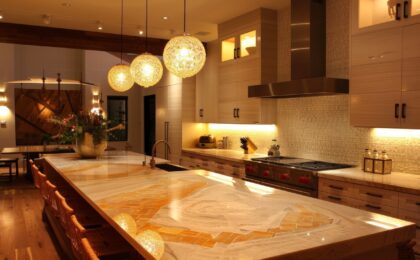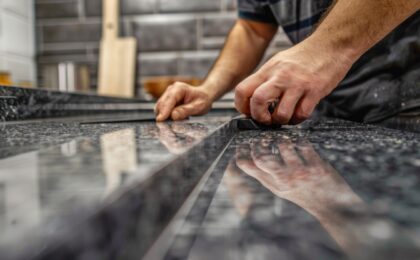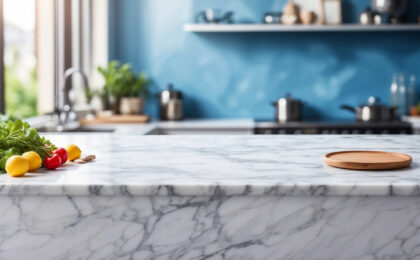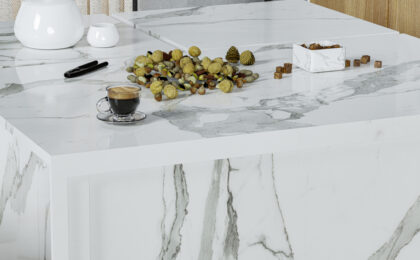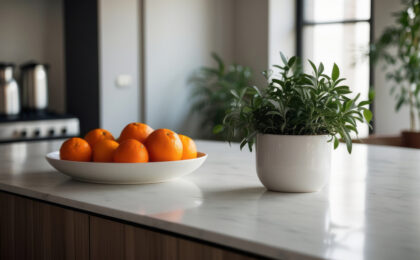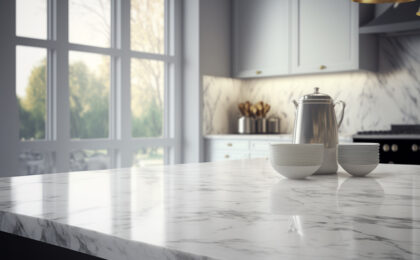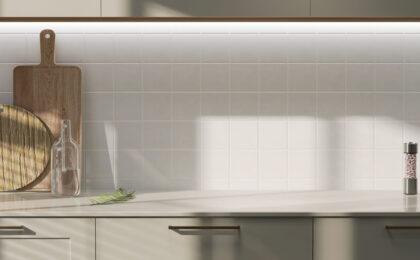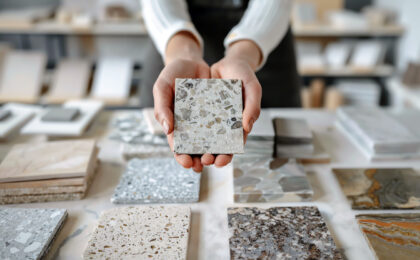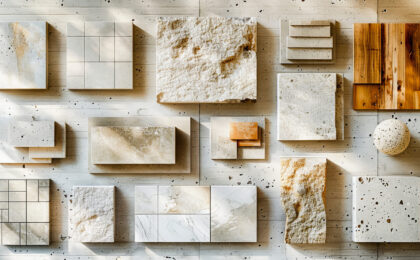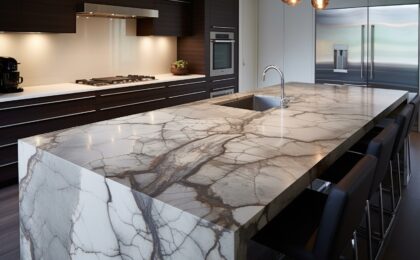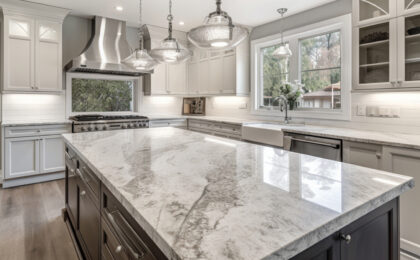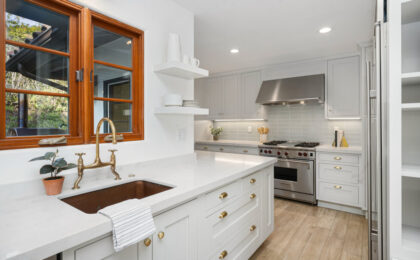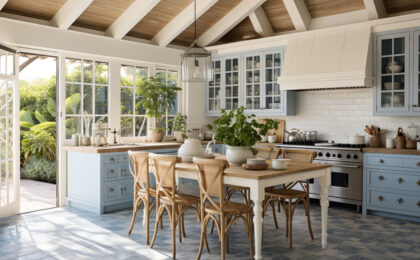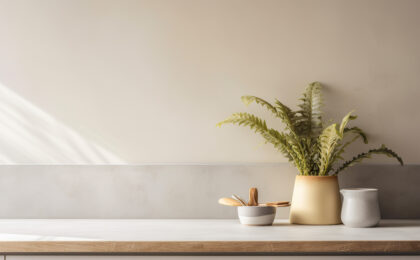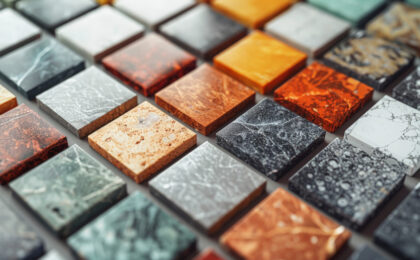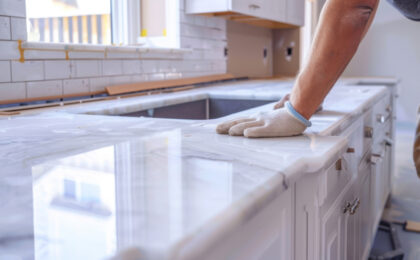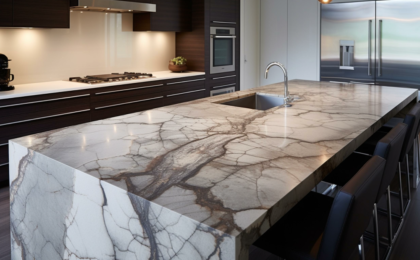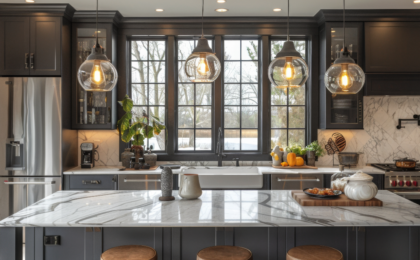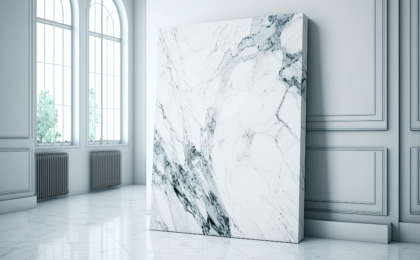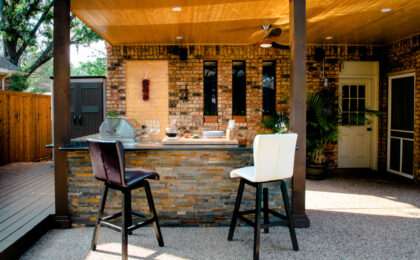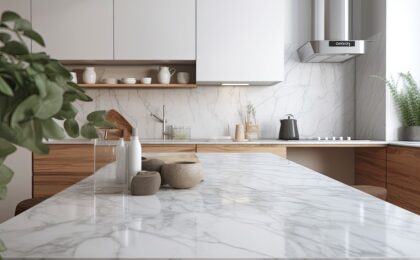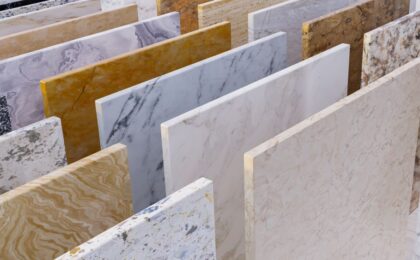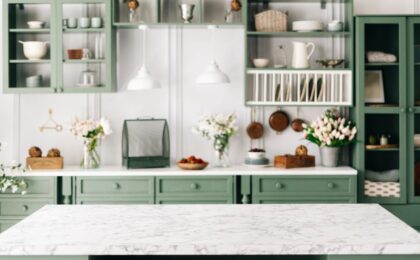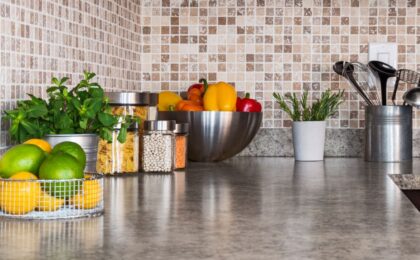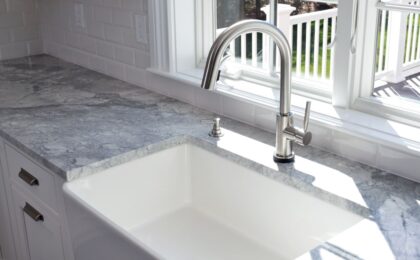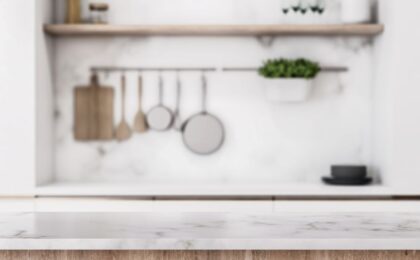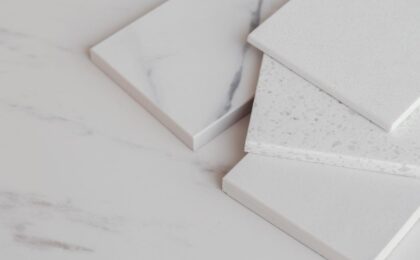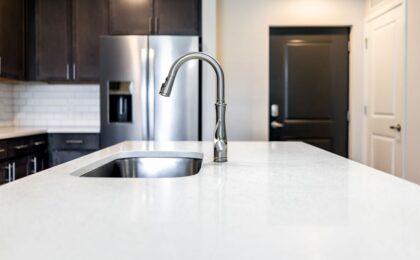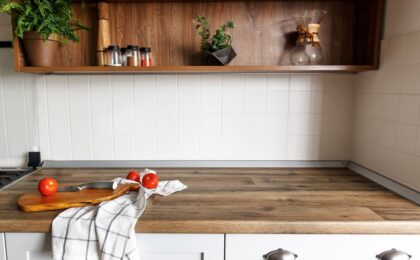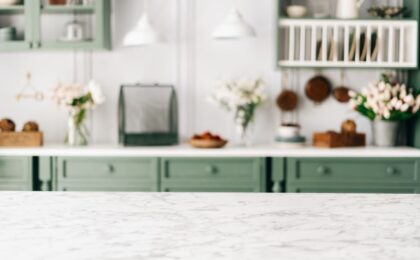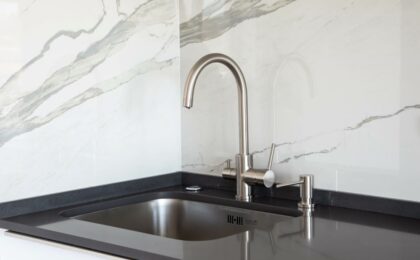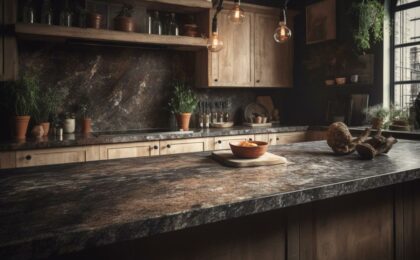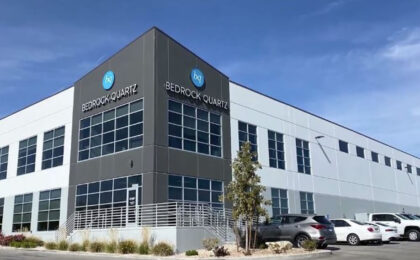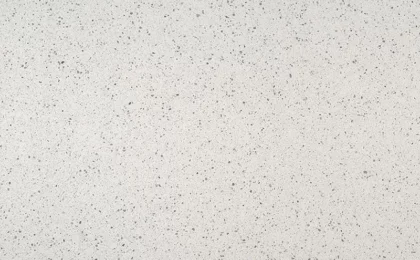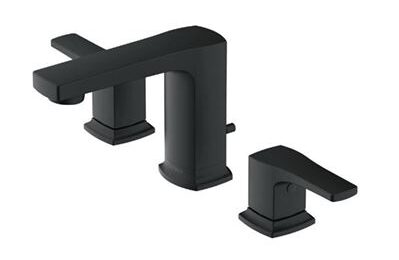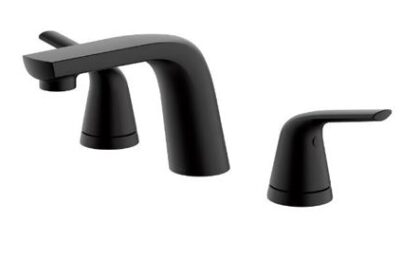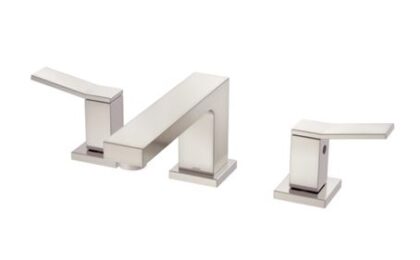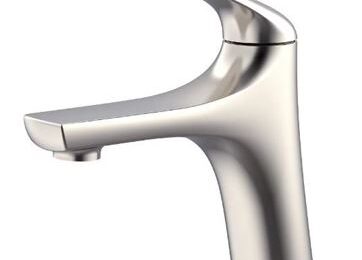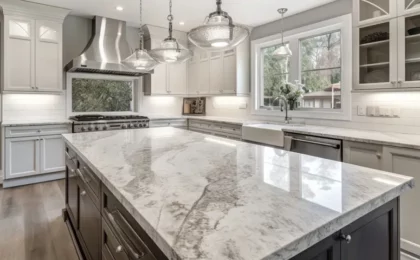We have heard more than one person describe natural stone countertops as works of art for the kitchen. How could we disagree? Stone countertops are naturally beautiful and gloriously unique. Yet they are prone to a specific type of damage that can ruin everything. That damage is known as etching.
Etching is most likely to occur with natural stones heavy in calcium. Marble immediately comes to mind. Other natural stones especially susceptible to etching are limestone and travertine. If your countertops are made from any of these materials, it is really important that you avoid etching as best as you can.
Etching: A Basic Explanation
Etching is a specific type of damage that occurs when acidic substances make contact with the polished stone surface. A chemical reaction between the substance and the stone occurs. In essence, the acidic substance corrodes the top surface to reveal dull stone underneath.
Do not necessarily think of etching as a deep scratch or gouge. More often than not, etching manifests itself as a lighter colored spot on the stone surface. Etching also creates a dull appearance. If you stand and look at a marble countertop from a certain angle, you can easily spot etching because dull spots stand out against the otherwise polished surface.
Be Careful With Acidic Substances
Acidic substances are the arch enemy of calcium-based natural stones. You just need to be careful with them. The worst among them in a typical American kitchen include things like vinegar, red wine, tomato sauce, and virtually any citrus juice. These are the big ones to be particularly vigilant about.
Also be aware that certain types of cleaning products are equally harmful. Never use a general-purpose cleaner on marble or another calcium-based natural stone. Stick with a pH-neutral cleaning product specifically designed for your stone material of choice.
While we haven’t mentioned granite so far in this post, it is not immune from etching. It does stand up better to acidic foods than marble, limestone, and travertine, but granite can still be etched after exposure to certain substances.
Tips for Avoiding Etching
The best way to not have to worry about how to repair countertop etching is to avoid it altogether. We have already talked about being careful with acidic substances and cleaning products. But what else can you do? Here are some additional tips:
- Address Spills Immediately – Get into the habit of addressing spills immediately. Do not let any spilled substances sit on the countertop for any length of time. Developing this habit means not having to distinguish between acidic and non-acidic substances because you are cleaning up everything right away.
- Use Cutting Boards and Trivets – Always use cutting boards and trivets on natural stone countertops. Doing so avoids other types of damage that could ultimately contribute to etching.
- Seal on a Regular Schedule – Countertop sealants have come a long way in recent years. You can prevent etching by sealing your countertop on a regular schedule with a top-of-the-line sealant recommended by the manufacturer or dealer.
In the unfortunate event that your countertop gets etched despite your most diligent efforts to avoid it, don’t panic. There are ways to deal with etching. It might not be easy to restore your countertops, but the chances are pretty good they can be restored.
Despite the potential for etching, materials like marble make for wonderful countertop surfaces that can be truly called works of art. If you have not seen natural stone countertops in-person before, why not pay a visit to one of our Utah showrooms. You may be inspired to invest in your own kitchen art.

